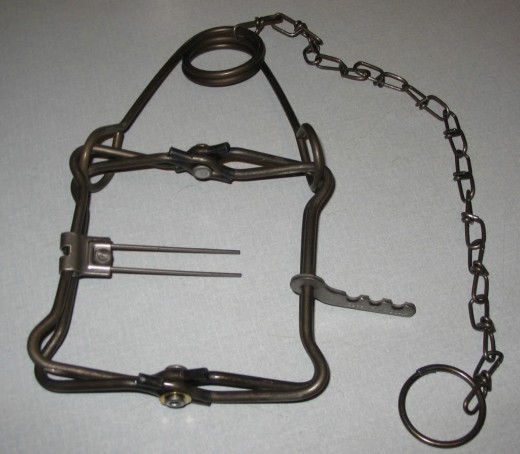Be aware: Animal traps or snares present dangers to pets
For dog lovers who enjoy spending time outdoors, hiking can be a great way to appreciate the great outdoors while also exercising your pooch. While you may expect and prepare for some of the more common outdoor dangers, often times over looked by pet owners is the potential danger that poorly placed snares and other game animal traps can pose to our domestic pets.

Check your local state laws to learn during what time of the year, and where, game traps can legally be set. Normally you should be able to find this out by contacting your local Fish and Wildlife Department. In some states, trapping is legal on public property during trapping season. Unfortunately, these public lands are often times also popular hiking destinations. Poorly placed traps that are set near hiking trails can pose a very serious safety risk to dogs who may be hiking with their owners. Also, it's important not to let your pets wonder in wooded areas where traps may be set. Some kinds of hunters traps are designed to kill animals, and they do not discriminate between a game animal and a wondering pet. Even traps that are not designed to kill can inflict serious injuries.
It's important for pet owners who frequent potential trapping areas to be aware of this danger. If the worst case scenario occurs and your pet gets trapped, often times time is of the essence. The faster you can release your pet from the trap the better. Pets caught in traps for long periods of time are more likely to become very stressed, and it's not uncommon for them to injure themselves further by trying to free themselves. If your pet does get caught in a hunter's trap, stay as calm as possible. Your pet will probably already be stressed out and possibly injured, but stressing out yourself is not going to help the situation. There are three types of commonly used hunting traps. There are snares, leg hold traps, and conibear traps. All three types can be opened if you know how to do it and remain clam and level headed.
Snares are loops usually made of steel cable that are designed to loop around an animals neck or legs. The are made so that if an animal struggles, the snare will tighten around the animal. If you come across a dog or other type of domestic pet caught in a snare, it's important to try to keep the animal as calm as possible. If you can, find and loosen the locking mechanism on the snare. This should loosen the loop and allow it to be removed from around the animal. If, for any reason, you cannot undo the lock, you can use wire cutters to cut through the loop of the snare.
Foot or leg hold traps are designed to close around an animals foot or leg without directly killing the animal. While dogs and other domestic animals caught in leg hold traps normally survive, serious complications and injuries can occur. These traps are usually spring loaded and released by pulling or pushing down levers on either side of the trap. Because these traps are normally not life threatening, if you can't get the trap open in the field you should be able to remove the trap from the ground while still attacked to your pet, then transport your pet to a veterinarian or anyone else who can help you remove the trap.
Body gripping or conibear traps can be the most dangerous because they can be difficult to remove, and are designed to kill the animal they trap. This type of trap consists of a squared frame with springs on either side. They are designed to trap an animal around the neck or body and kill them by suffocation. Conibear traps can be opened by compressing and locking the springs on either side of the trap. Depending on the size of the trap and your strength, you may not be able to open these traps by hand. Your dogs leash, or any other type of rope can be used to assist if you are not strong enough to open the trap by hand. See the video below for instructions on how to free trapped pets from a conibear type trap.
There are many websites out there that give detailed diagrams on how to release each type of commonly used traps. This can be important information for owners who take there pets hiking to be aware of. If your pet does ever get trapped, remaining calm and knowing how to open traps may save your pets life. If you like to go hiking in wildlife areas where trapping is allowed, keep your pet leashed and near you at all times. A leashed pet can still become a victim of a trap, but the closer your pet is to you and the faster you can free them from the trap, the better chance they will have at escaping serious injury or even death.








